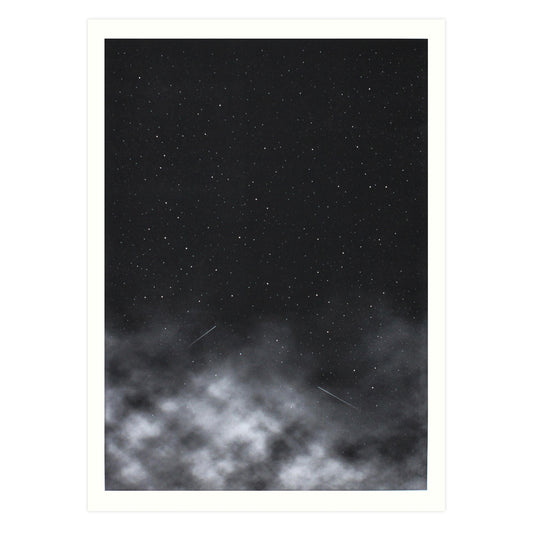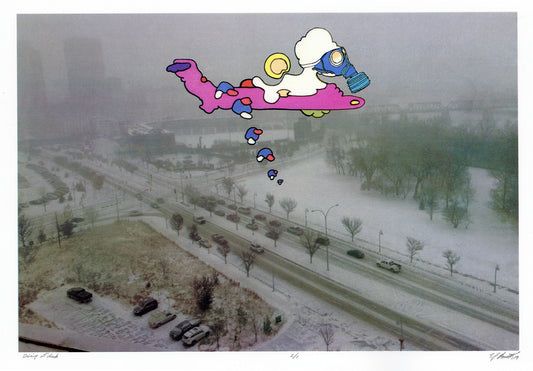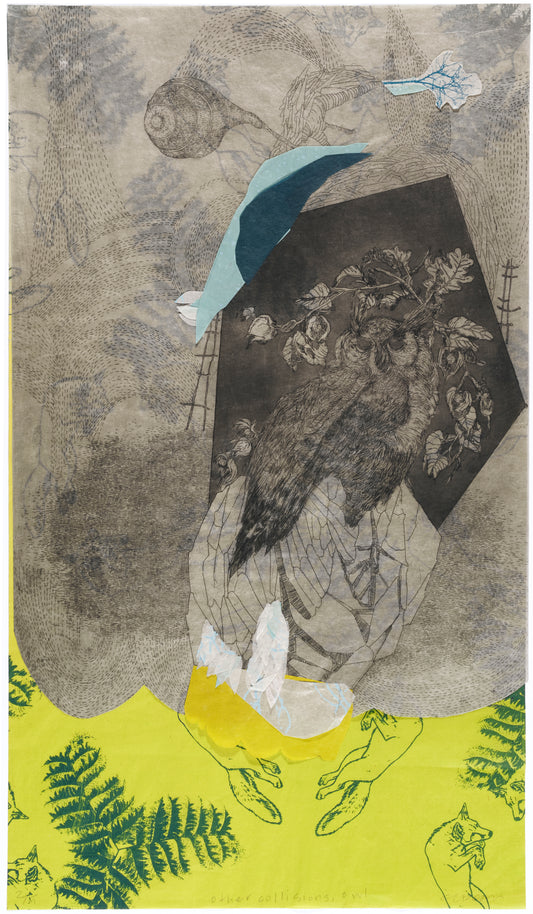Collection: Screenprinting
View our print courses here.
Screenprinting, also known as serigraphy or silkscreen printing, is a printmaking technique where ink is pushed through a mesh screen onto a surface, such as paper or fabric. The screen is coated with a stencil or photosensitive emulsion that blocks certain areas, allowing ink to pass through the open parts and create the desired image. Various screenprinting methods include:
Stencil Screenprinting: Involves using hand-cut or pre-made stencils to block parts of the screen, controlling where ink is applied.
Photo Screenprinting: Uses a photosensitive emulsion to create more complex, photographic, or computer-generated images on the screen.
CMYK Screenprinting: A method of layering cyan, magenta, yellow, and black inks to produce full-colour images.
Difference between Photo and CMYK Screenprinting: Photo screenprinting uses a photographic process to create detailed stencils on a screen, allowing for intricate designs with fine lines and gradients. In contrast, CMYK screenprinting involves using separate screens for each of the four colors (Cyan, Magenta, Yellow, Black) to layer translucent inks and produce full-color images. While photo screenprinting excels in reproducing detailed artwork, CMYK screenprinting is designed for achieving a broad spectrum of colours through multiple passes.
Source: MoMA
Need help choosing art, starting a collection, finding a gift, or locating an artist? Let's connect!
-
AA Bronson - Coeur Volant
Regular price $3,500.00 CADRegular priceUnit price / per -
AA Bronson - Mondo Cane Karma Sutra
Regular price $5,000.00 CADRegular priceUnit price / per -
AA Bronson - Red Hankie #1
Regular price From $4,800.00 CADRegular priceUnit price / per -
AA Bronson - Red Hankie #2
Regular price From $4,800.00 CADRegular priceUnit price / per -
Annie Wong - 一百鬼 / 100 Ghosts
Regular price $1,000.00 CADRegular priceUnit price / per -
Arwen Giel - La Quinta
Regular price $175.00 CADRegular priceUnit price / per -
Brenda Joy Lem - Brave New World
Regular price $250.00 CADRegular priceUnit price / per -
Brenda Joy Lem - Floating
Regular price $600.00 CADRegular priceUnit price / per -
Brenda Joy Lem - Flying...over mountain and sea, I return to the land that remembers me
Regular price $200.00 CADRegular priceUnit price / per -
 Sold out
Sold outBrenda Joy Lem - Nest
Regular price $200.00 CADRegular priceUnit price / per -
Brian Groombridge: Comets Tell of Great Distances Travelled
Regular price $11,000.00 CADRegular priceUnit price / per -
Brian Kelley - Cedarshade
Regular price $800.00 CADRegular priceUnit price / per -
Brian Kelley - Light of Spring
Regular price $600.00 CADRegular priceUnit price / per -
Brian Kelley - Rockwood (Diptych)
Regular price $2,000.00 CADRegular priceUnit price / per -
Carlina Chen - My Nightly Visit to the Garden #6
Regular price $250.00 CADRegular priceUnit price / per -
Carlina Chen - Secret Garden #12-06
Regular price $550.00 CADRegular priceUnit price / per -
Carlina Chen - Secret Garden #12-09
Regular price $550.00 CADRegular priceUnit price / per -
Christine Kaelin - Module 111 18 1 (Shifting Frequencies series)
Regular price $1,500.00 CADRegular priceUnit price / per -
Diana Birkenheier - Boboli Gardens: Florence
Regular price $400.00 CADRegular priceUnit price / per -
Doug Guildford - Under the Skin of the Sea (East) #2
Regular price $2,000.00 CADRegular priceUnit price / per -
E.J Howorth - Diving at dusk
Regular price $450.00 CADRegular priceUnit price / per -
Elizabeth D'Agostino - A Curious Assortment III
Regular price $500.00 CADRegular priceUnit price / per -
Elizabeth D'Agostino - Makeshift Tales
Regular price $500.00 CADRegular priceUnit price / per -
Elizabeth D'Agostino - Other Collisions, Owl
Regular price $500.00 CADRegular priceUnit price / per -
Elizabeth D'Agostino - Rabbit Cocoon
Regular price $650.00 CADRegular priceUnit price / per -
Erica Rutherford - Cherry Valley
Regular price $1,600.00 CADRegular priceUnit price / per -
Erica Rutherford - Flowers
Regular price $1,800.00 CADRegular priceUnit price / per -
Erica Rutherford - Night Shore
Regular price $1,800.00 CADRegular priceUnit price / per -
Erica Rutherford - Potted Tulips
Regular price $1,600.00 CADRegular priceUnit price / per -
Erica Rutherford - Purple Tulips
Regular price $1,600.00 CADRegular priceUnit price / per -
Erica Rutherford - Still Life with Red
Regular price $1,600.00 CADRegular priceUnit price / per -
Erica Rutherford - The Owl and the Pussycat
Regular price $1,600.00 CADRegular priceUnit price / per -
Erica Rutherford - The Picnic
Regular price $1,600.00 CADRegular priceUnit price / per -
Erica Rutherford - Tulips
Regular price $1,600.00 CADRegular priceUnit price / per -
Erin Kiyomi - Look Out
Regular price $50.00 CADRegular priceUnit price / per -
 Sold out
Sold outErin Kiyomi - Sailing the Prairie
Regular price $50.00 CADRegular priceUnit price / per



































